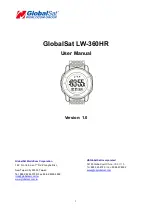
Speed limit exceeded
: the device plays a tone and displays a
red border on the speed limit icon when you exceed the
posted speed limit for the current road.
Wrong way on a one-way street
: the device plays a message
and displays a full-screen warning if you travel the wrong way
on a one-way street. The edges of the screen appear red and
an alert remains at the top of the screen until you leave the
one-way street or correct your direction of travel.
Level crossing
: the device plays a tone and displays the
distance to an upcoming level crossing.
Animal crossing
: the device plays a tone and displays the
distance to an upcoming animal crossing area.
Curve
: the device plays a tone and displays the distance to a
curve in the road.
Slower traffic
: the device plays a tone and displays the
distance to slower traffic when you approach slower traffic at
a higher speed. Your device must be receiving traffic
information to use this feature (
).
Fatigue warning
: the device plays a tone and suggests
upcoming rest stops after you have been driving for more
than two hours without stopping.
Forward collision warning
: the device alerts you when it
detects that you are not maintaining a safe distance between
your vehicle and the vehicle in front of you (
).
Lane departure warning
: the device alerts you when it detects
you may be crossing a lane boundary unintentionally (
).
Go alert
: the device plays a tone and displays an alert when
stopped traffic starts moving.
Enabling or disabling audible driver alerts
You can enable or disable the audible tone for some types of
driver alerts. The visual alert appears even when the tone is
disabled.
1
Select
Settings
>
Driver Assistance
>
Audible Driver
Alerts
.
2
Select or clear the tick box next to each alert.
Red light and speed cameras
NOTICE
Garmin is not responsible for the accuracy of or the
consequences of using a red light or speed camera database.
NOTE:
this feature is not available for all regions or product
models.
Information about red light and speed camera locations is
available in some areas for some product models. The device
alerts you when you approach a reported speed or red light
camera.
• Live red light and safety camera data is available as a
subscription from Garmin Live Services using the
Smartphone Link app (
).
• You must purchase a subscription to download and store
safety camera data on your device. Go to
to check availability and compatibility, or to
purchase a subscription or one-time update. You can
purchase a new region or extend an existing subscription at
any time.
• In some regions, some product bundles include pre-loaded
red light and speed camera data with lifetime updates.
• You can use the Garmin Express
™
) to update the camera database stored on your
device. You should update your device frequently to receive
the most up-to-date camera information.
Incident Detection and Notifications
Your Garmin DriveAssist device uses built-in sensors to detect a
possible vehicle incident.
• The device automatically saves dash cam video footage
before, during and after the detected incident.
• If you set up an incident contact, the device can send an
automated text message to that contact when it detects an
incident and your vehicle stops moving. This can help alert
the contact to your situation if you are not able to call or send
a message. This feature requires a connection to
Smartphone Link and an active mobile data connection to
send a message.
• If you have not set up an incident contact, the device
automatically displays the nearest address or geographic
coordinates when it detects an incident. This feature is
helpful if you need to tell emergency personnel your location.
You can select
More
to view the Where Am I? page.
Setting Up an Incident Contact
Before you can set up an incident detection contact, you must
complete these tasks:
• Connect your device to Smartphone Link (
phone and connecting to Smartphone Link
).
• Select
Settings
>
Wireless Networks
, select your phone
name, and verify the
Phone calls
option is enabled.
The device must have access to the Smartphone Link app and
to your smartphone phone book during the incident contact
setup. If you do not want to use your device for hands-free
calling, you can disable the Phone calls option after the incident
contact setup is complete.
1
Select
Settings
>
Driver Assistance
>
Incident
Notification
>
Continue
.
A list of your smartphone contacts appears.
2
Select a contact, and select
Next
.
3
Verify the contact's phone number, and select
Next
.
4
Enter your name or nickname, and select
Done
.
5
Review the sample incident message, and select
Next
.
6
Follow the on-screen instructions to inform your contact that
you have added them as an incident contact.
NOTE:
the incident notification message includes the name
or nickname you entered, but it is not sent from your phone
number. The message is sent using a third-party service, and
you should inform your incident contact that the incident
message will come from an unknown number.
7
Select
OK
.
8
Review the information, and select
Save
.
Cancelling an Incident Notification
When the device detects an incident, a message and a voice
prompt inform you that a notification will be sent to your incident
contact. A 60-second countdown timer starts when the incident
is detected, and the device sends the notification automatically
when the timer expires. If you do not want to send the
notification, you can cancel it.
Before the timer expires, select
Cancel
.
Disabling Incident Notifications
While incident notifications are disabled, the device does not
send an SMS notification when it detects an incident.
1
Select
Settings
>
Driver Assistance
>
Incident
Notification
.
2
Clear the
Incident Detection SMS
tick box.
4
Driver awareness features and alerts









































